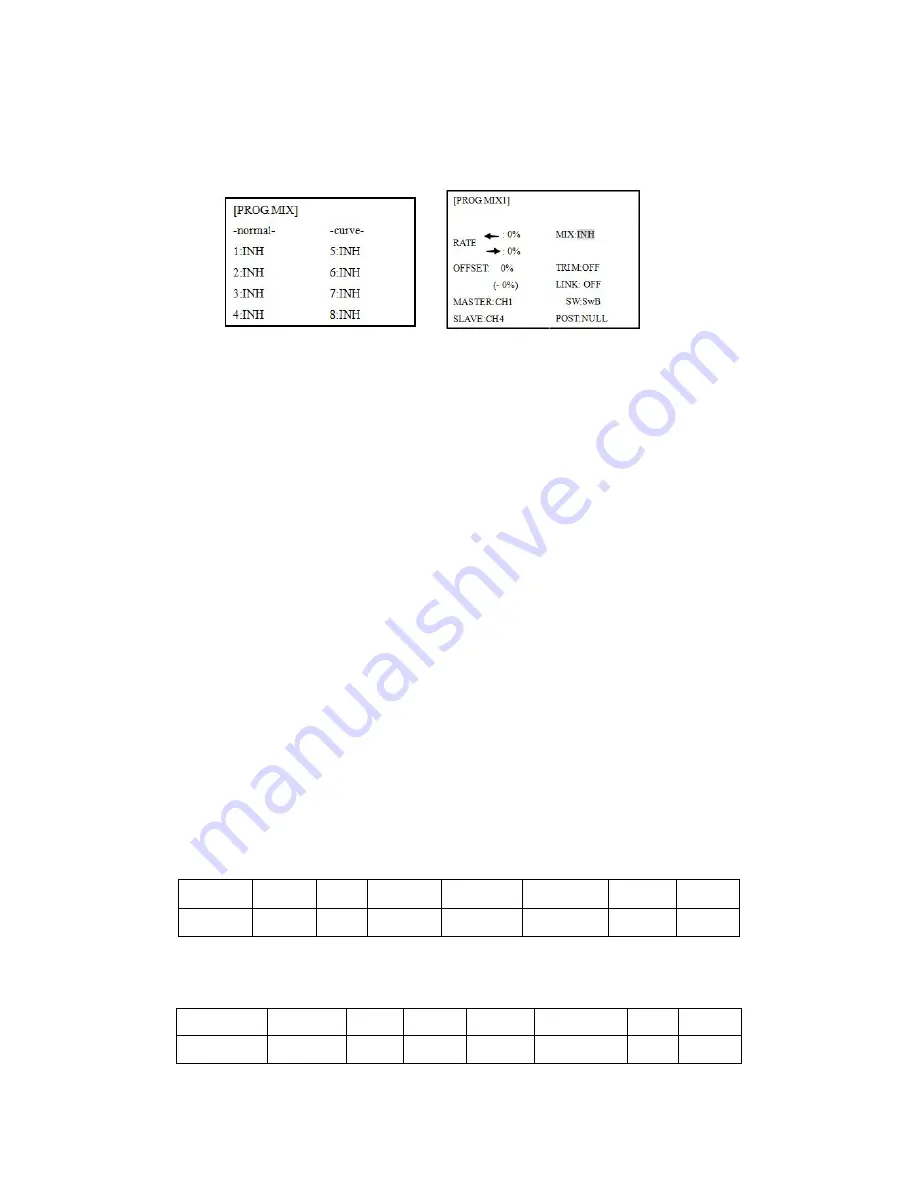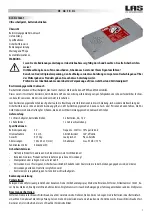
35
• THROTTLE DELAY mixing is a pre-programmed delay mix that slows down the response of the CH3
servo.
Next, we'll get an in-depth look at some pre-programmed mixes (mixes whose channels are predefined for
simplicity) we’ve not covered yet, and last, look at the fully-programmable mix types.
3.3.1 Program MIX
AT9 contains four separate linear programmable mixes. (Note that mixer #5-8’s mixing RATE are set with a
5-point curve. HELI has mixer #5-6's mixing. See CURVE MIXES
There are a variety of reasons you might want to use these mixes. A few are listed here. All of the adjustable
parameters are listed below, but don’t let them scare you. For your first few times experimenting with mixes,
just turn on the default mixes, adjust them how you think they need to be, then use the servo screen to check
and see if you were correct. As with all functions, a sample
setup follows, step by step, to assist you.
Sample reasons to use linear programmable mixes:
• To correct bad tendencies of the aircraft (such as rolling in response to rudder input).
• To operate 2 or more servos for a single axis (such as two rudder servos).
• To automatically correct for a particular action (such as lowering elevator when flaps are lowered).
• To operate a second channel in response to movement in a first channel (such as increasing the amount of
smoke oil in response to more throttle application, but only when the smoke switch is active).
• To turn off response of a primary control in certain circumstances (such as simulating one engine flaming
-out on a twin, or throttle-assisted rudder turns, also with a twin).
Adjustability:
• Defaults: The 4 programmable mixes default to the most frequently used mixes for simplicity. If you want
to use one of
these mixes, simply select that mix number so that the master and slave servos are already selected for you.
• PROG.MIX1 aileron-to-rudder for coordinated turns
• PROG.MIX2 elevator-to-flap for tighter loops (HELI mixes default to elev-to-pitch.)
• PROG.MIX3 flap-to-elevator to compensate pitching with flaps (HELI mixes default to pitch-to-elev)
• PROG.MIX4 throttle-to-rudder ground handling compensation
•Channels available to mix: All four mixes may use any combination of CH1-8. (CH9-10 are not
proportional and cannot be mixed.) Offset and dials may also be set to the master channels.
•Master: the controlling channel, the channel whose movement is followed by the slave channel.
•Another channel: Most mixes follow a control channel. (Ex: rudder-to-ailerons, 25%, no switch, corrects
roll coupling.)
MASTER
SLAVE
LINK
TRIM
SWITCH
POSITION
RATE OFFSET
RUDD
AILE
ON
OFF
ANY
NULL
25%
0
•Offset as master: To create an OFFSET mix, set the master as OFST. (Ex: Move flaperons as flaps 20% of
their total throw when SWITCH C is in down position.)
MASTER
SLAVE
LINK
TRIM SWITCH
POSITION
RATE OFFSET
OFST
FLAP
ON
N/A
C
DOWN
20% 0
• Dial as master: To directly effect one servo’s position by moving a dial, set the master as the desired dial.
(Ex: create a second throttle trim on left slider.)
















































